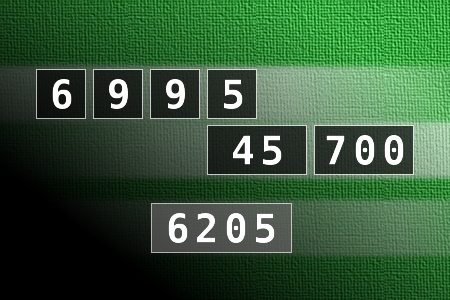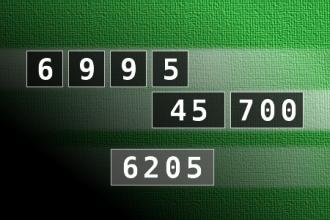Calculate the number 6205
NUMBERMANIA: Calculate the number 6205 using numbers [6, 9, 9, 5, 45, 700] and basic arithmetic operations (+, -, *, /). Each of the numbers can be used only once.Correct answers: 12
The first user who solved this task is Nílton Corrêa de Sousa.
#brainteasers #math #numbermania


